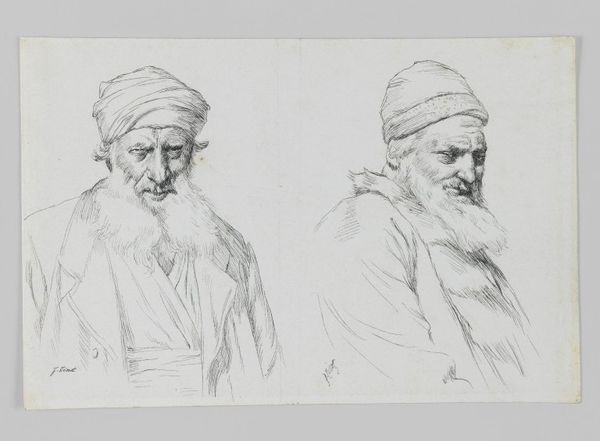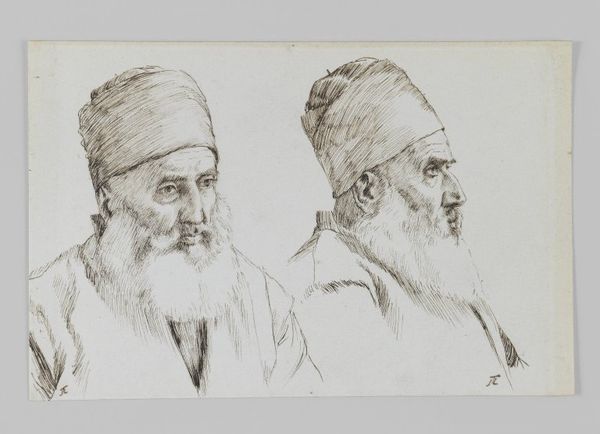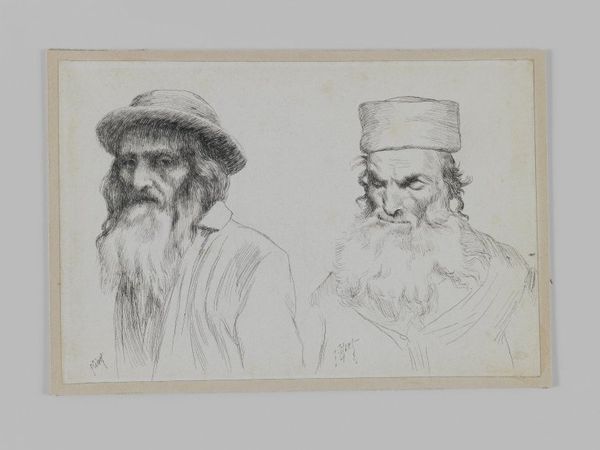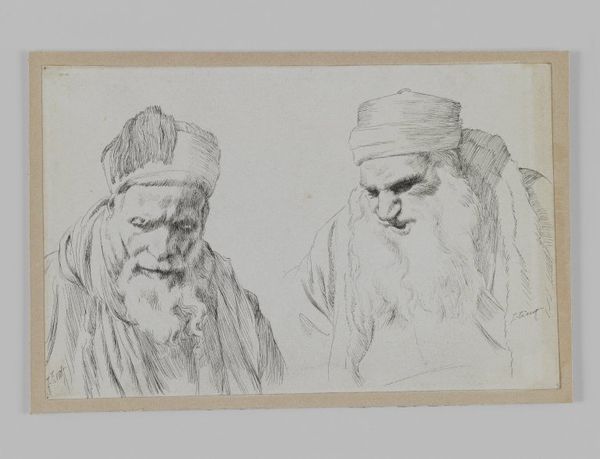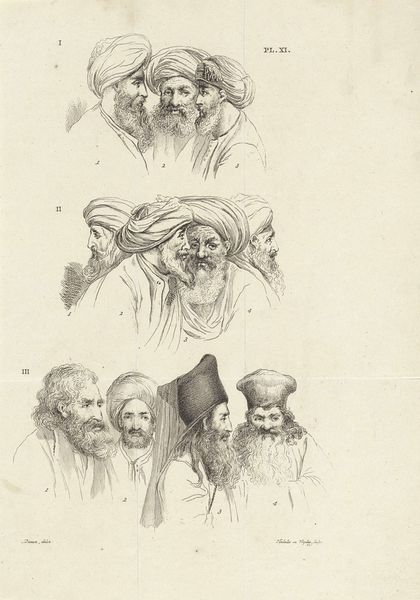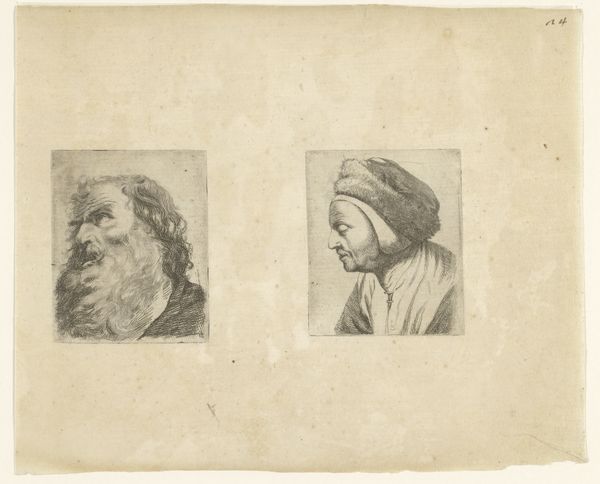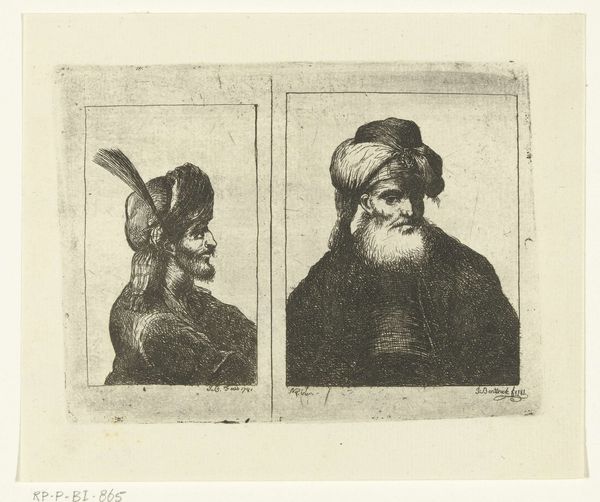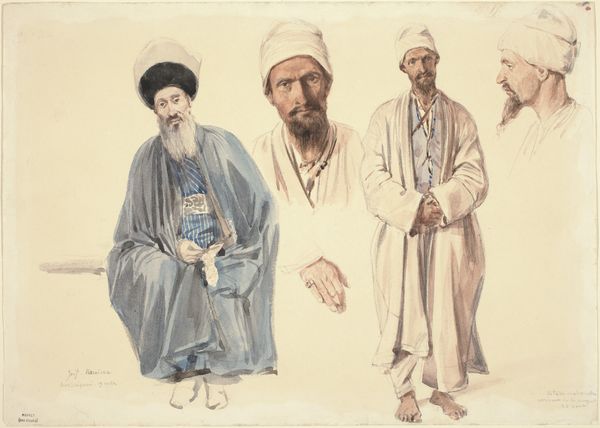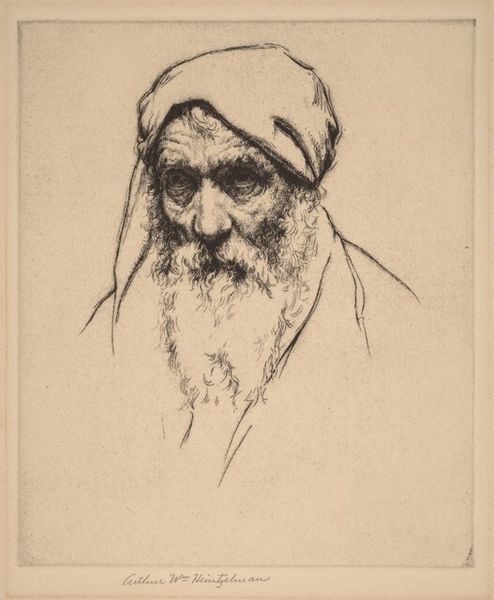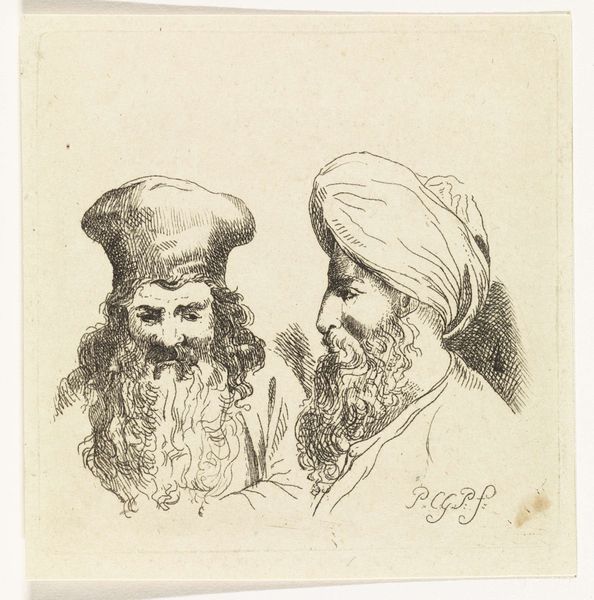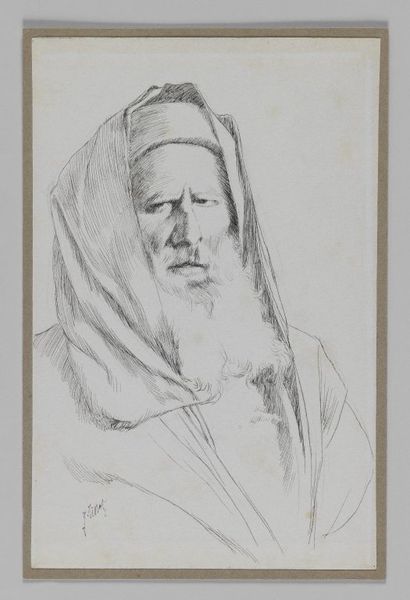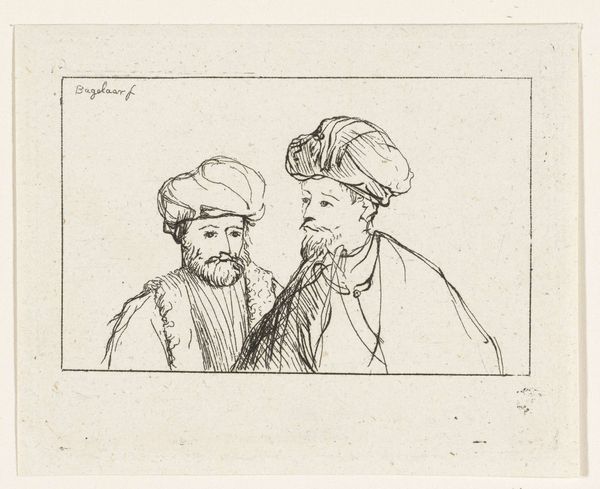
Jew and Jewess, illustration from 'The Life of Our Lord Jesus Christ'
0:00
0:00
drawing, paper, ink
#
portrait
#
pencil drawn
#
drawing
#
pencil sketch
#
paper
#
ink
#
pencil drawing
#
orientalism
#
line
#
portrait drawing
#
academic-art
Dimensions: 17.9 x 12.1 cm
Copyright: Public domain
Curator: This intriguing work, currently held at the Brooklyn Museum, is a drawing titled "Jew and Jewess, illustration from 'The Life of Our Lord Jesus Christ'" by James Tissot. It seems to be rendered primarily in ink on paper. Editor: The immediacy of the line work is really striking. I find it has a sketch-like quality, like a preliminary study, and evokes a strong sense of realism, almost ethnographic. Curator: Tissot was a very interesting figure, a painter who achieved enormous success in his day with depictions of modern life. His shift towards religious themes later in his career coincided with a renewed focus on historical accuracy and detail, rooted in orientalism. The artist produced hundreds of illustrations to depict scenes in the Bible; Tissot sought out to capture images as observed and researched while in the Middle East. Editor: The way these figures are presented invites questions about representation and identity. Consider how the artist's own background, as a French Catholic, shapes his rendering of Jewish figures. It definitely intersects with Orientalist views, positioning them in relation to a Western gaze and narrative. I wonder about the ethics involved. Curator: Absolutely. Tissot's work operates within the broader history of representing the 'Other,' and we must consider the potential perpetuation of stereotypes. The drawing served within the specific project to visualize the New Testament narrative. The imagery certainly gained traction at the turn of the century. Editor: And beyond the intention, we must assess the effect, right? Does this drawing reinforce or challenge dominant power dynamics and prevailing stereotypes, not just of his time, but resonating still in our own. I am concerned whether the artist captured authentic portrayals, and how these are seen today. Curator: The success of "The Life of Our Lord Jesus Christ" indicates the influence of those portrayals at the time. Its popular dissemination helped construct public images. It does not excuse the representational problem, but frames it institutionally. Editor: Yes. This piece makes me want to deconstruct its layers – the artistic skill, the religious context, and the inherent biases embedded within its creation and reception. Ultimately, it's a piece that generates very crucial discussions. Curator: For me too. Exploring it helps uncover the layers of artistic intention, the biases it may reflect, and the cultural impact it had—and continues to have—on society.
Comments
No comments
Be the first to comment and join the conversation on the ultimate creative platform.
